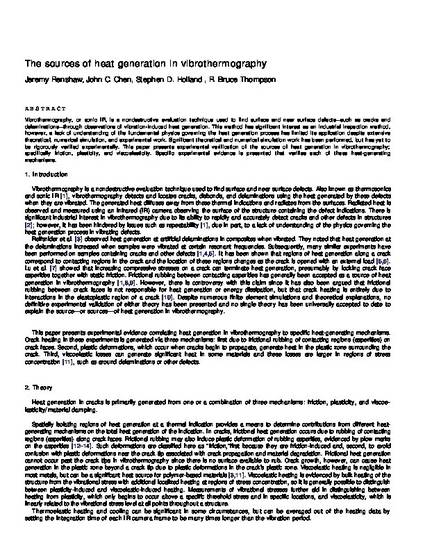
Vibrothermography, or sonic IR, is a nondestructive evaluation technique used to find surface and near surface defects—such as cracks and delaminations—through observations of vibration-induced heat generation. This method has significant interest as an industrial inspection method, however, a lack of understanding of the fundamental physics governing the heat generation process has limited its application despite extensive theoretical, numerical simulation, and experimental work. Significant theoretical and numerical simulation work has been performed, but has yet to be rigorously verified experimentally. This paper presents experimental verification of the sources of heat generation in vibrothermography; specifically friction, plasticity, and viscoelasticity. Specific experimental evidence is presented that verifies each of these heat-generating mechanisms.
Available at: http://works.bepress.com/rbruce_thompson/22/

This is a post-print of an article from NDT&E International 44, no. 8 (December 2011): 736–739, doi:10.1016/j.ndteint.2011.07.012.